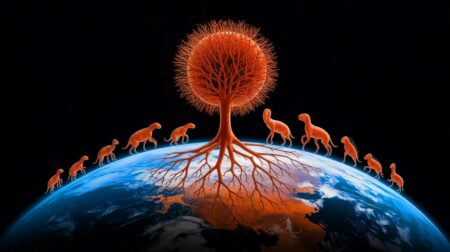Numerous species large and small have gone extinct in recent decades and numerous others are on the verge of doing so. Plenty of others have an unknown conservation status, not having been seen for decades, which means they may or may not have gone extinct.
Of terrestrial vertebrate species alone, close on 600 species can be classified as “lost” because they have not been seen by anyone in a half century, says a team of researchers who reviewed data on nearly 33,000 species in the International Union for Conservation of Nature Red List of Threatened Species and have identified as many as 562 lost species.
That is to say, all these species, or the vast majority of them at the very least, are likely to have gone extinct, but they cannot be classified as such with absolute certainty for lack of conclusive evidence.
The Red List itself identifies 75 of these 562 “lost” species as “possibly extinct,” but as the global mass extinction of species accelerates it will become “increasingly problematic” for scientists to determine the actual status of many species listed as critically endangered, the scientists behind the study note.
“While biological extinctions are predicted to rise sharply during the Anthropocene, extinction declarations are rare, partly due to inherent uncertainties in knowing when the last individual of a species has died,” the scientists write.
“The existence of such species may prove increasingly problematic as the extinction crisis worsens, given that their presence may create uncertainty with respect to conservation prioritization efforts and to our understanding of extinction rates,” they elucidate.
Since 1500, a total of 311 land-based vertebrate species have been declared extinct, which means that 80% more species are considered lost than have been declared extinct, the scientists point out.
Among these lost species, reptiles are the most numerous with 257 species of them considered lost, followed by 137 species of amphibians, 130 species of mammals and 38 species of birds. “Most of these lost animals were last seen in megadiverse countries such as Indonesia (69 species), Mexico (33 species) and Brazil (29 species),” the scientists say.
And that is a cause for concern, they stress.
“The fact most of these lost species are found in megadiverse tropical countries is worrying, given such countries are expected to experience the highest numbers of extinctions in the coming decades,” Tom Martin, a scientists at the Paignton Zoo in the United Kingdom who was the study’s lead author.
In order to get a clearer picture of the rate of extinction within threatened biodiversity hotspots, especially in the tropics where large-scale deforestation has been driving massive habitat loss, further fieldwork will need to be undertaken with the aim of either rediscovering lost species or removing any lingering doubts whether they have gone extinct, the experts say.
Did you like it? 4.6/5 (25)








